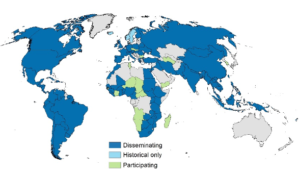Research, data preparation, story and graphics by Amalea Jubara and Yaxuan Zhang (Minnesota Population Center, Summer Diversity Fellows), mentored by Jonathan Schroeder (IPUMS Research Scientist) and Ying Song (Assistant Professor, Department of Geography, Environment & Society)
Edited by Jonathan Schroeder (IPUMS Research Scientist)
IPUMS NHGIS Block Data: An Expanding Collection
The most spatially precise U.S. census data are block-level tables, summarizing population and housing characteristics for millions of blocks throughout the country. IPUMS NHGIS provides block-level tables for the 1970 to 2010 decennial censuses as well as block boundary files for 1990, 2000 and 2010. This collection is set to grow substantially in the next few years as NHGIS adds new 2020 census block data and as we continue with a major initiative to construct 1980 and 1970 block boundary files. This expansion will open up new possibilities for high-precision spatial analysis across a longer time span.
A Case Study of the Twin Cities’ Black Population
To demonstrate some of the potential value of this expanding collection, we use NHGIS block data, including some not-yet-released 1980 block boundaries, to explore the recent history of racial segregation and integration in the Black population of the Twin Cities of Minneapolis and St. Paul, Minnesota, from 1980 to 2010. We present the block data in an interactive map along with data on early-20th-century racial covenants and the “redlining” zones of the Home Owners’ Loan Corporation (HOLC), recently published by the Mapping Prejudice and Mapping Inequality projects.
The block-level changes since 1980 show a striking trend toward greater dispersion and integration of Black residents, but segregation persists; several neighborhoods still have uniformly low or high proportions of Black residents. By overlaying racial covenants and HOLC zones with the block data, we can also find cases where the historical discriminatory practices appear to have left a lasting imprint on the distribution of Black residents.

